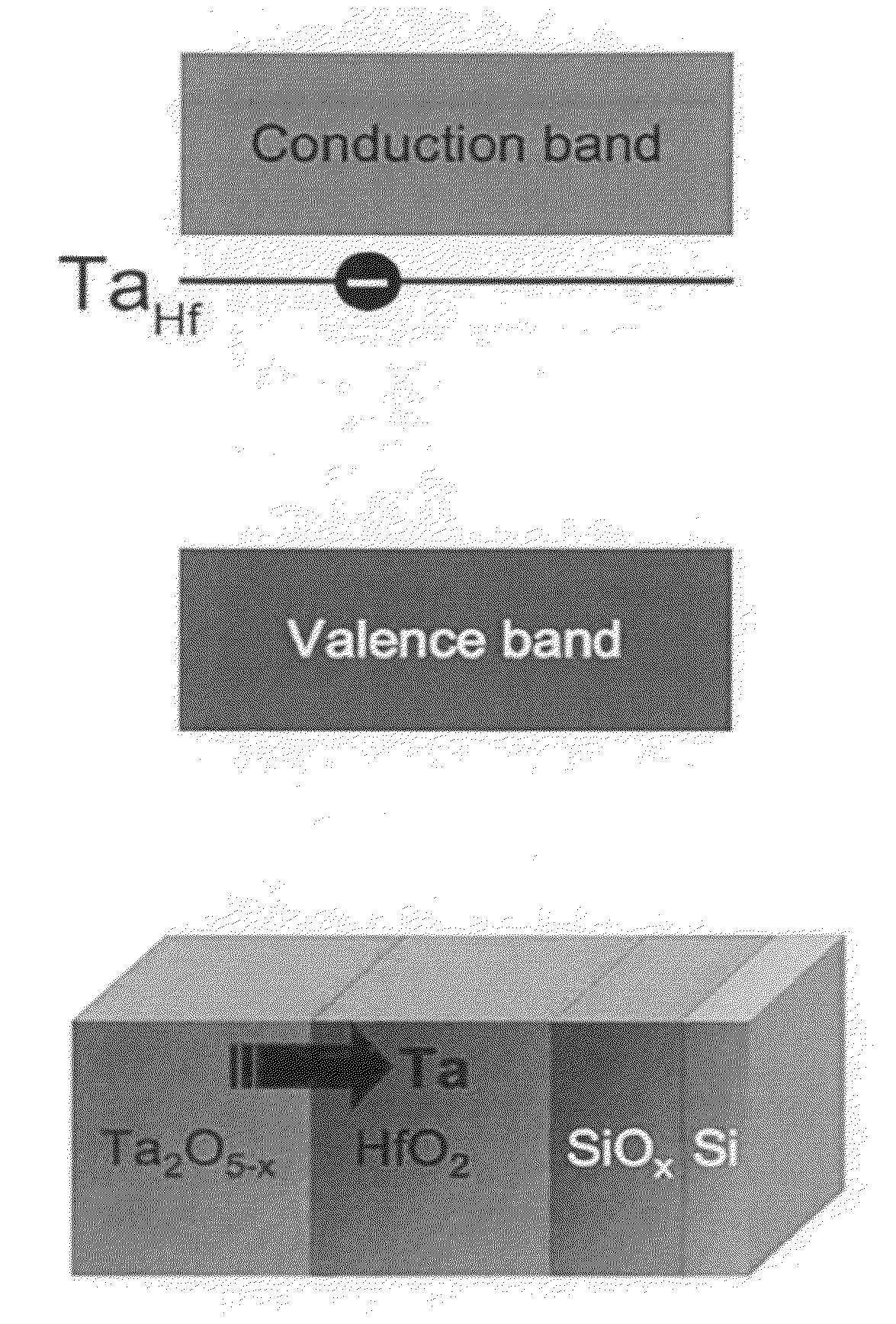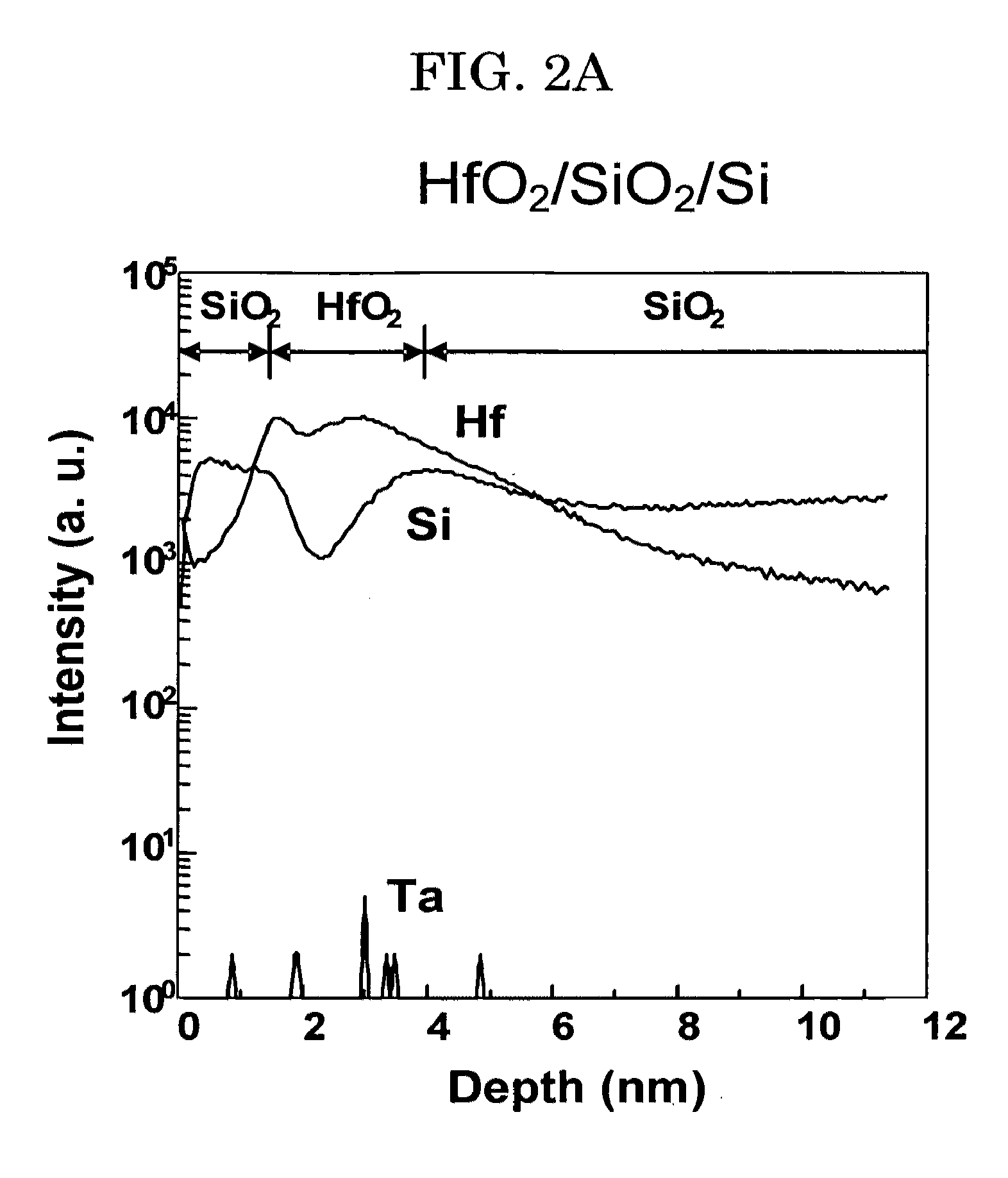Method for Reducing Thickness of Interfacial Layer, Method for Forming High Dielectric Constant Gate Insulating Film, High Dielectric Constant Gate Insulating Film, High Dielectric Constant Gate Oxide Film, and Transistor Having High Dielectric Constant Gate Oxide Film
a technology of interfacial layer and thickness, which is applied in the direction of electrical equipment, semiconductor devices, semiconductor/solid-state device details, etc., can solve the problems of increasing the oxygen void in the high dielectric film, the interfacial layer is not substantially solved, and the dielectric constant is not substantial
- Summary
- Abstract
- Description
- Claims
- Application Information
AI Technical Summary
Benefits of technology
Problems solved by technology
Method used
Image
Examples
example 1
[0061]Here, an example for exhibiting an effect of reducing a thickness of an interfacial layer according to the present invention will be explained in comparison with a comparative example according to the conventional art.
[0062]A right half of the photograph of FIG. 1 is a transmission electron microscopic (TEM) photograph of a cross-section of a layer structure produced in one example of the present invention. For the production of this layer structure, a thin silicon oxide (SiO2) film is formed on a Si substrate, followed by forming hafnium oxide (HfO2) film on the SiO2 film. Thereafter, a tantalum oxide (Ta2O5-x) film is formed on the HfO2 film (the reason for using Ta2O5-x, not Ta2O5, will be explained later).
[0063]A more specific production method of the aforementioned layer structure is as follows.
[0064]After removing a natural oxide film on a surface of the Si substrate with a diluted hydrofluoric acid solution, the Si substrate was treated by sub...
example 2
[0092]An example where the present invention is applied to a production method of a complementary metal oxide semiconductor (CMOS) integrated circuit constituted of an n-channel and p-channel MOS transistors will be explained with reference to FIGS. 6 to 15. On the actual practice, numbers of transistors are formed on a semiconductor substrate, but in the following example, it is explained, for easiness in understanding, as if one n-channel MOS transistor and one p-channel MOS transistor are produced.
[0093]First, as illustrated in FIG. 6, for example, an element isolation trench 602 was formed in a main surface of a semiconductor substrate formed of a p-type monocrystal silicon (referred to as the substrate, hereinafter) 601 by the conventional shallow trench isolation technique.
[0094]Subsequently, an n-channel MOS transistor forming region (left half in the figure, which is the same in the following figures) of the substrate 601 was doped with boron by ion implantation, and a p-cha...
PUM
| Property | Measurement | Unit |
|---|---|---|
| temperature | aaaaa | aaaaa |
| thickness | aaaaa | aaaaa |
| thickness | aaaaa | aaaaa |
Abstract
Description
Claims
Application Information
 Login to View More
Login to View More - R&D
- Intellectual Property
- Life Sciences
- Materials
- Tech Scout
- Unparalleled Data Quality
- Higher Quality Content
- 60% Fewer Hallucinations
Browse by: Latest US Patents, China's latest patents, Technical Efficacy Thesaurus, Application Domain, Technology Topic, Popular Technical Reports.
© 2025 PatSnap. All rights reserved.Legal|Privacy policy|Modern Slavery Act Transparency Statement|Sitemap|About US| Contact US: help@patsnap.com



